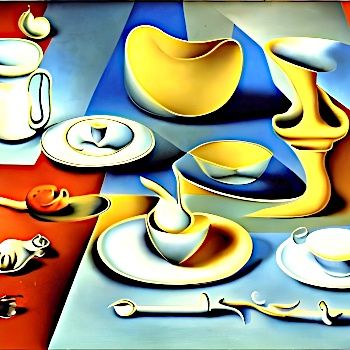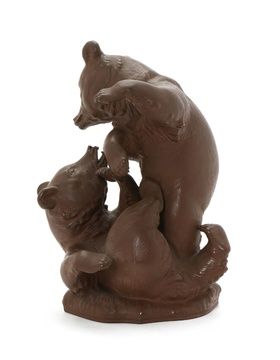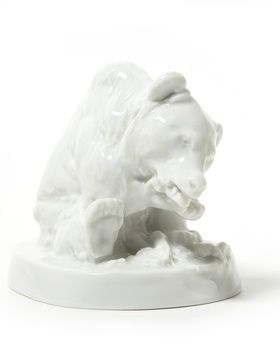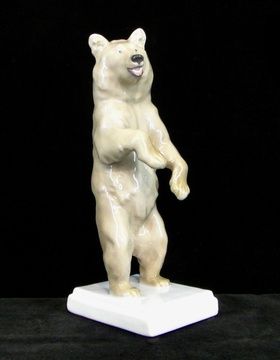
Мейсен - это немецкий город, известный своей продукцией из фарфора. Мейсенский фарфор считается одним из самых известных и престижных видов фарфоровой продукции в мире.
История Мейсенского фарфора начинается в XVIII веке, когда в 1708 году Эрнст Боттгер, алхимик и изобретатель, смог создать первый в Европе фарфор. Король Саксонии пригласил Боттгера в Мейсен, где он основал первую фабрику по производству фарфора.
Особенность Мейсенского фарфора заключается в том, что он производится из особого состава, который включает в себя каолин, кварц и глину. Этот состав даёт материалу светлый и белоснежный цвет, а также делает его особенно прочным и долговечным.
Одной из самых известных особенностей Мейсенского фарфора являются его ручные росписи.
Мастера Мейсенской фабрики использовали разнообразные техники росписи, включая мелкий рисунок, гравировку и золотую роспись.
Мейсенский фарфор также известен своими декоративными элементами, такими как фигурки животных, цветов, ангелов и других персонажей. Мейсенские мастера производят изделия в различных стилях, включая барокко, рококо и классицизм.
Сегодня Мейсенский фарфор по-прежнему является популярным предметом коллекционирования и используется для украшения интерьера. Фарфоровые изделия Мейсенской фабрики продолжают производиться и продаваться по всему миру.
Кроме истории и особенностей Мейсенского фарфора, есть и другие , связанные с этим видом фарфоровой продукции. Некоторые из них:
Мейсенский фарфор был изначально создан как альтернатива китайскому портянку. В XVIII веке китайский фарфор был очень популярен в Европе, но его импорт был дорогим и редким. Боттгер считал, что если он сможет создать свой собственный фарфор, то это поможет Германии обойти зависимость от китайского импорта.
Мейсенский фарфор был очень популярен в Европе в XVIII веке. Многие короли и члены европейской аристократии заказывали изделия Мейсенской фабрики для своих дворцов и замков. Некоторые изделия были так ценными, что их можно было использовать в качестве валюты.
Мейсенский фарфор был также очень популярен среди коллекционеров. Многие коллекционеры в XVIII и XIX веках собирали Мейсенский фарфор, и это продолжается и сегодня. Редкие и уникальные предметы Мейсенской фабрики могут стоить очень дорого на аукционах.
Мейсенский фарфор используется не только для производства статуэток, но и для создания посуды, ваз, бокалов и других предметов. Некоторые из этих предметов имеют уникальные дизайны и оформление, что делает их очень ценными с точки зрения искусства.
Мейсенский фарфор производится до сих пор, и фабрика продолжает работать в Мейсене. Фабрика находится на берегу реки Эльбы и имеет туристический интерес. Туристы могут посетить фабрику, чтобы узнать больше о истории Мейсенского фарфора и посмотреть на мастерство мастеров в работе.
Конкуренты
Когда Мейсенская фабрика фарфора была основана в начале XVIII века, она была единственной фабрикой фарфора в Европе. Но со временем появились другие фабрики, которые стали конкурировать с Мейсенской.
Одним из главных конкурентов Мейсенской фабрики была Венская фабрика фарфора, которая была основана в 1718 году, всего через несколько лет после Мейсенской фабрики. Венская фабрика фарфора была одной из наиболее успешных фабрик в Европе в XVIII веке и производила фарфор, который был популярен во всем мире. Венская фабрика фарфора специализировалась на создании белого фарфора и знаменитых бисерных фигурок.
Другим конкурентом Мейсенской фабрики была Севрская фабрика фарфора, которая была основана в 1738 году. Фабрика производила высококачественный фарфор, который был очень популярен среди аристократов во всей Европе. Она также производила большое количество декоративных изделий, таких как вазы, статуэтки и посуда.
Стоит упомянуть конкурентов Мейсенской фабрики в других странах, таких как Английская фабрика фарфора в Ворчестере и Королевская фабрика фарфора в Севре. Однако Мейсенский фарфор был одним из самых популярных и знаменитых фарфоров в Европе в XVIII веке, и он продолжает быть одним из наиболее ценных и собираемых фарфоров по всему миру до сегодняшнего дня.
Чем отличался фарфор Мейсенской фабрики и Венская фабрика
Мейсенский фарфор и Венский фарфор отличались несколькими важными особенностями.
Во-первых, Мейсенский фарфор изначально был разработан для имитации китайского фарфора, который был в то время очень популярен в Европе. Фарфор Мейсенской фабрики имел белый цвет и украшался ручной росписью, иногда в сочетании с позолотой. Этот стиль производства фарфора был широко популяризирован во всей Европе и считается типичным для многих фабрик, которые были основаны позже.
Венский фарфор, напротив, специализировался на производстве бисерных фигурок, которые имели красочные декоративные элементы и были более реалистичными, чем фарфор Мейсенской фабрики. Венский фарфор также изначально был произведен в имитации китайского стиля, но со временем стал развиваться в собственное направление.
Во-вторых, Мейсенский фарфор был произведен из более высококачественных материалов, чем Венский фарфор. Мейсенский фарфор производился из каолиновой глины, которая была добыта в округе Мейсен в Германии. Венский фарфор, в свою очередь, производился из мягкой глины, которая была обработана в специальных условиях.
Мейсенский фарфор был произведен с использованием инновационных технологий и методов, которые были разработаны на фабрике Мейсен. Например, для производства фарфора использовалась специальная глиняная смесь, которая была смешана с фарфоровой массой и подвергнута высокотемпературному обжигу в специальных печах. Также на Мейсенской фабрике были использованы новые методы окрашивания фарфора, включая различные виды красителей и эмали.
В целом, Мейсенский фарфор и Венский фарфор имели разные стили производства и дизайна, и они были предназначены для разных рынков
Однако обе фабрики производили очень качественный и изысканный фарфор, который был высоко оценен в Европе и за ее пределами.
Мейсенский фарфор, как уже упоминалось, был широко популяризирован в Европе в XVIII веке и стал одним из самых популярных стилей производства фарфора в течение нескольких десятилетий. Венский фарфор, с другой стороны, развивался более медленно и не был так популярен в Европе, как Мейсенский фарфор. Однако в Австрии Венский фарфор стал символом искусства и культуры, и многие культурные институты и музеи посвящены этому виду искусства.
В итоге, Мейсенский фарфор и Венский фарфор отличались друг от друга по стилю, материалам, технологиям производства и ориентации на рынок. Однако обе фабрики были успешными в производстве качественного и изысканного фарфора, который стал символом роскоши и искусства в Европе и по всему миру.
Конкуренты в России
В России было несколько фабрик по производству фарфора, которые являлись конкурентами или подражателями Мейсенскому фарфору.
Одна из наиболее известных фабрик была Императорская фарфоровая мануфактура, основанная в Санкт-Петербурге в 1744 году по инициативе императрицы Елизаветы Петровны. Фабрика производила различные изделия из фарфора, включая статуэтки, посуду, украшения и даже мебель. Мануфактура была оснащена современными технологиями производства фарфора и привлекала высококвалифицированных мастеров из разных стран, включая Германию, Чехию и Францию. Фарфор Императорской мануфактуры был высоко оценен за его качество и изысканный дизайн и был экспортирован в разные страны мира.
Другой известной фабрикой в России была Гарднеровская фарфоровая мануфактура, основанная в Москве в 1766 году. Фабрика производила фарфоровую посуду, украшения, статуэтки и другие изделия, которые были известны своим качеством и элегантным дизайном. Гарднеровская мануфактура привлекала мастеров из Европы, включая Германию и Францию, и развивала свои технологии производства фарфора, в том числе использовала редкие минералы для создания новых цветов и эффектов.
Однако, несмотря на то, что эти фабрики были успешными в производстве фарфора, они не смогли повторить успех Мейсенского фарфора в масштабах Европы и мира. Мейсенский фарфор был и остается символом роскоши и изысканности, который оценивается коллекционерами и любителями искусства по всему миру.














